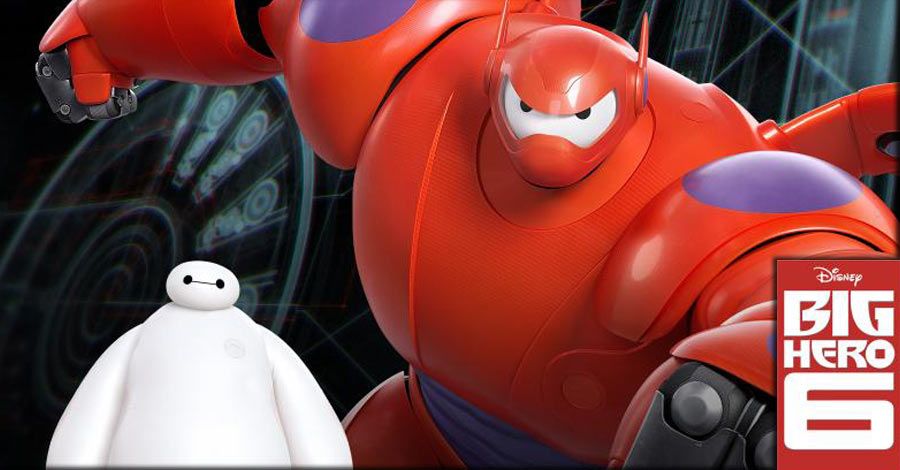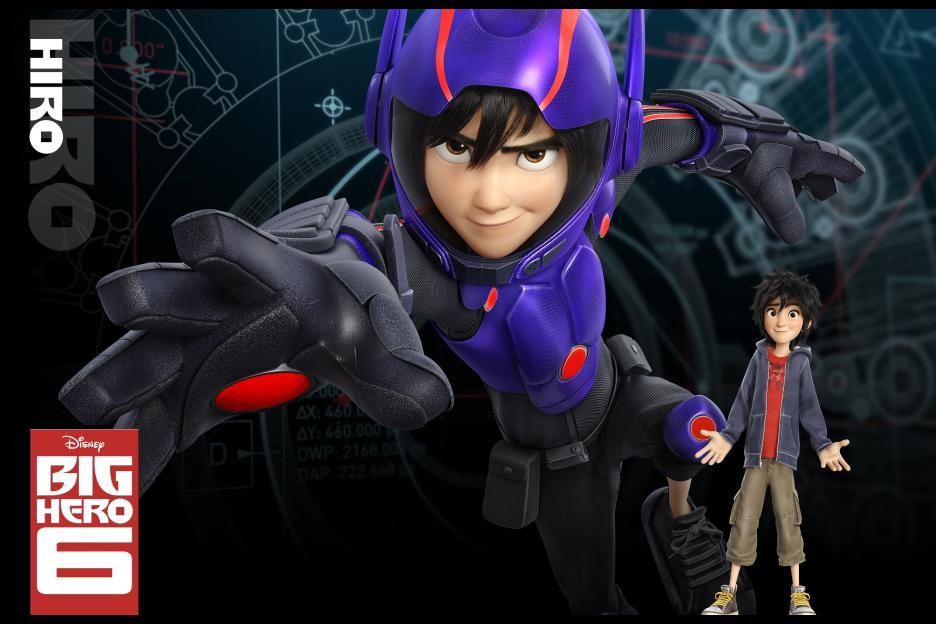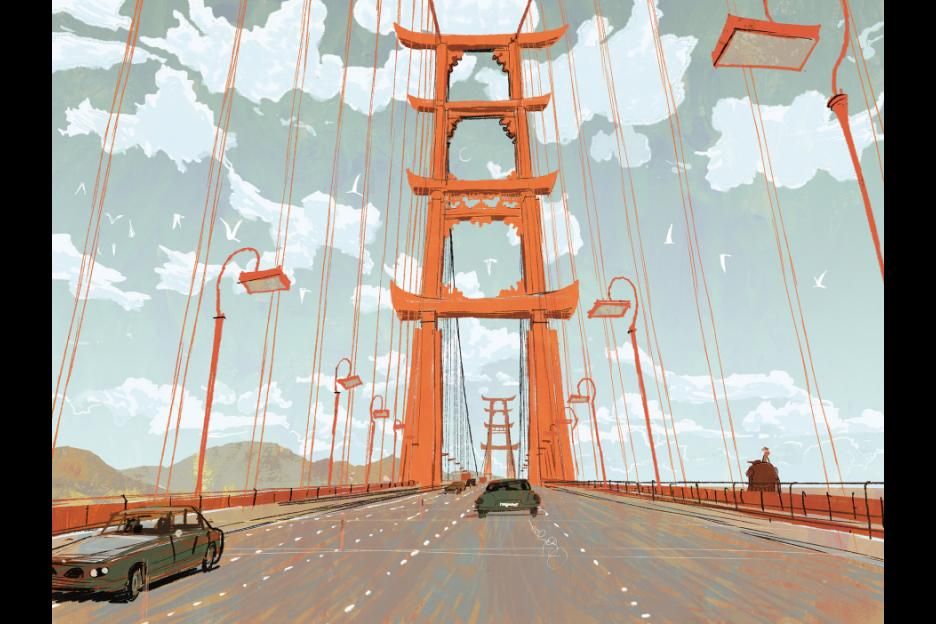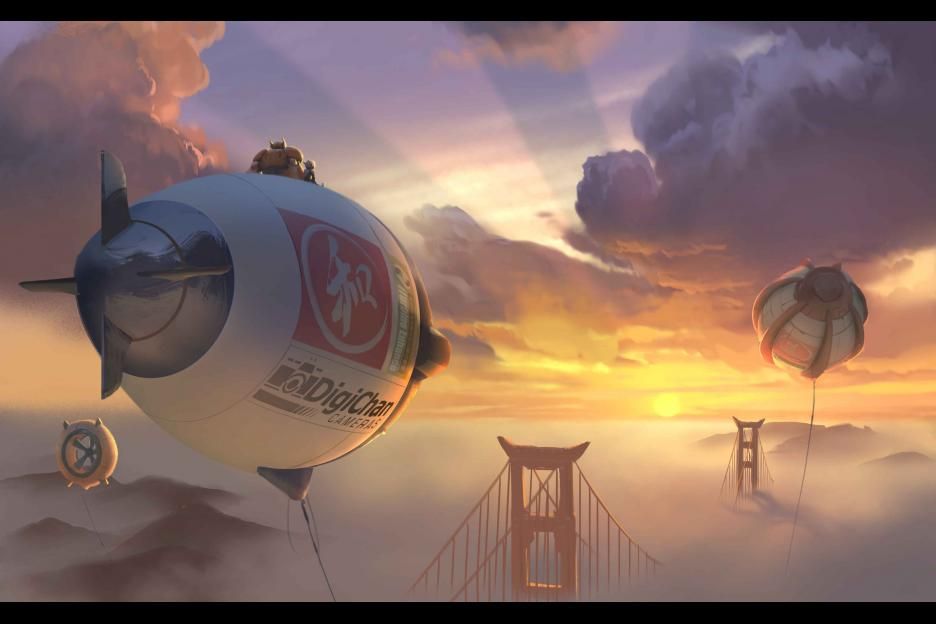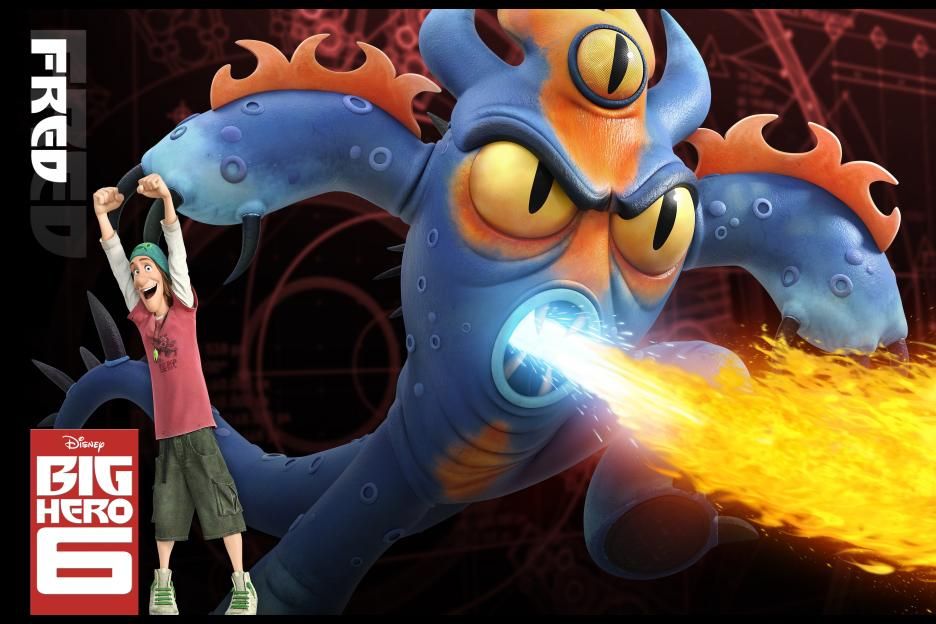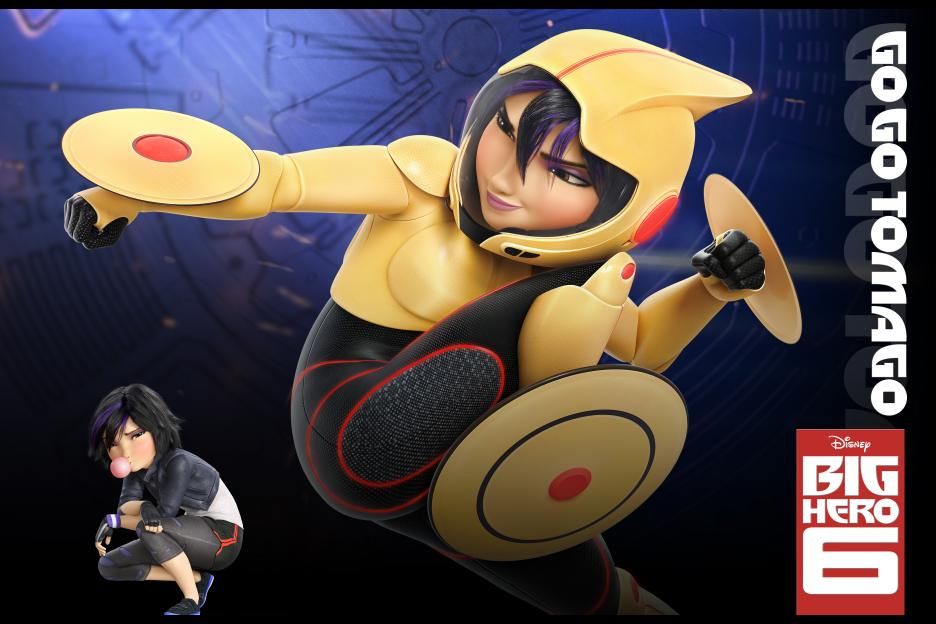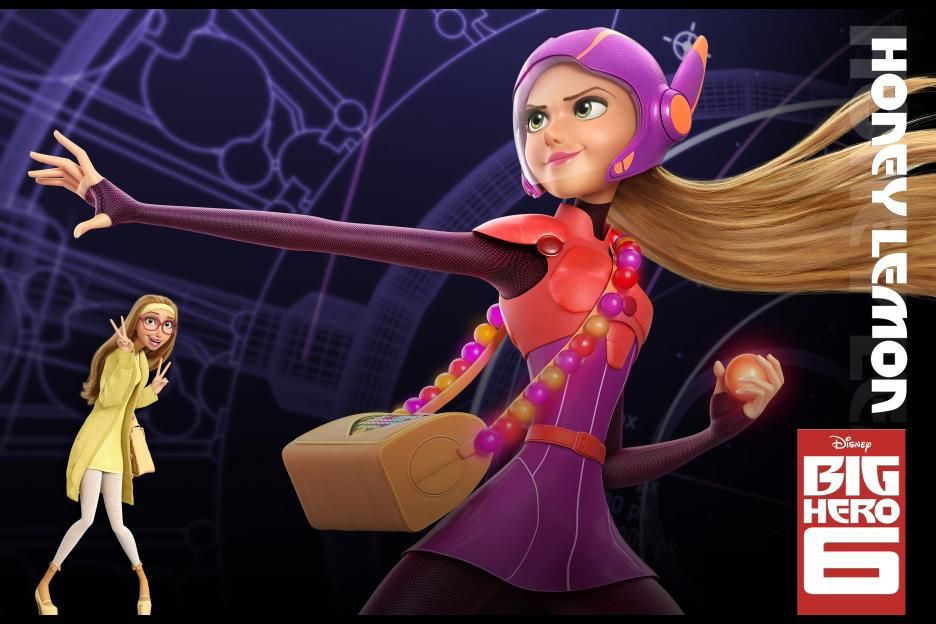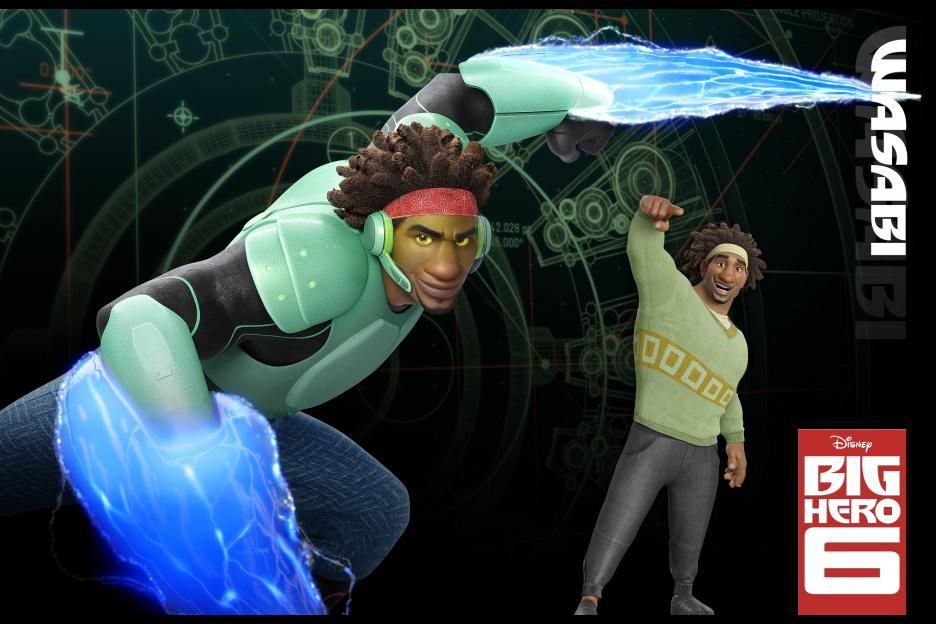"Big Hero 6" hit Comic-Con International in sunny San Diego, as producer Roy Conli, visual effects supervisor Kyle Odermatt, production designer Paul Felix, director Don Hall, character designer Shiyoon Kim and visual development artist Lorelay Bove shared the secrets of the sights and sounds of San Fransokyo and the characters who inhabit the fictional city.
The comedy adventure features robotics prodigy Hiro Hamada and his friends -- adrenaline junkie Go Go Tomago, neatnik Wasabi, chemistry whiz Honey Lemon and fanboy Fred. Hiro adds some upgrades to his closest companion, a robot named Baymax, in his effort to transform the group into a band of high-tech heroes, determined to save the day.
The panel began with a showing of the most recent teaser trailer, showing Hiro Hamada at a police station, pleading for the police to help against a mysterious new bad guy named Mr. Kabuki. The teaser ends with the funny revelation that when Baymax is low on power, his mannerisms and personality become very much like a drunk person.
Don Hall ("Winnie the Pooh") explained that back in 2011, a few years after Disney purchased Marvel, he really wanted to work on a movie that combined the two creative worlds. While researching various Marvel properties, he came across Big Hero 6, and it seemed like the perfect vehicle through which to make his vision a reality.
"Marvel really encouraged us to make our own world," Hall said, so he and the designers came up with the idea to mash San Francisco and Tokyo into a larger than life fictional city. They took all the big hills of San Francisco and mixed in Japanese aesthetic. "It is a fantasy world, but we want it to be as real and grounded as possible," Hall explained.
They went through a lot of concept art for the city of San Fransokyo, trying new things and designs, until they found a balance between the two cities they liked. From those designs, they created a 3D model of the city. The resulting fictional city is still geographically San Francisco, with the same shape and districts, but has been enhanced and doubled in size and height with the size of its buildings and hills.
Odermatt elaborated, saying that the city has a quarter-million trees, a quarter-million street lights and over a hundred thousand cars and people, all going about their routines. As a result, the city is alive and full of depth.
The emotional core of the movie is the relationship between Hiro and his robot Baymax, and the creators took great care in crafting their looks and mannerisms. Shiyoon Kim looked to his own childhood in designing Hiro, describing how the way the young hero holds his backpack or the state of his hair is a lot like Kim's own childhood mannerisms -- and his permanent bedhead haircut. "Kids these days are really good at multitasking," Kim said, specifically in how they will play games, watch TV, surf the web and read, all at once, something the designer really tried to bring out in his designs.
Baymax is a bit different from your typical mechanical character, Hall pointed out. "I wanted to put a unique spin on a robot... make it huggable." In his quest to find the perfect robot, Hall visited various colleges and robotic labs, eventually discovering someone experimenting with technology called 'soft robotics.' Using vinyl balloons in the shape of limbs, the scientists were able to recreate the movements of an arm. "As soon as I saw that, I knew we had our huggable robot, right there -- they had me at vinyl."
From there, the designers went looking for the perfect face for their robot. Kim came up with a minimalistic approach of using just 2 circles and a line to represent the robot's eyes, with no mouth or nose.
The last stage of design was Baymax's walk and how it moves. Hall gave the animators a simple directive: "Give us the cutest walk possible." His team came back with three options: The toddler, the toddler with a full diaper, and a baby penguin. A video showed the three walks side by side, and while they were very similar, they ultimately decided to go with 'the penguin.'
Surprise guest Ryan Potter, the voice of Hiro, arrived to introduce a clip from the movie. The actor said that after reading the script, "I fell in love with the film." He has yet to watch any scenes from the movie, saying he wants to wait until the completed product is ready.
The scene featured the first meeting between Hiro and Baymax, revealing that the robot is a personal healthcare companion that serves its owner. Through a quick succession of accidents, the robot repeatedly asks the same question to humorous effect, "On a scale of 1 to 10, how would you rate your pain?"
Fred was highlighted next. A young science fiction enthusiast who loves Kaiju monsters, he has the ability to transform into a smaller version of one. On an early trip to Japan, the designers were lucky enough to come upon an Ultraman museum and got many of their ideas for the character from the television monsters featured there.
Honey Lemon and Wasabi both went through some changes from their early designs. Originally, Honey Lemon was going to be darker in color and complexion, while Wasabi was originally going to be dressed more like a samurai, with loose flowing clothing. The least changed seems to be Go Go Tomago, whose tough girl look in leather remained consistent from the first designs to her final look.
Asked how much the movie will be like the original comic book series, Hall reiterated Marvel's directive to do their own thing. As a result, the film is "our love letter to Japanese culture."

